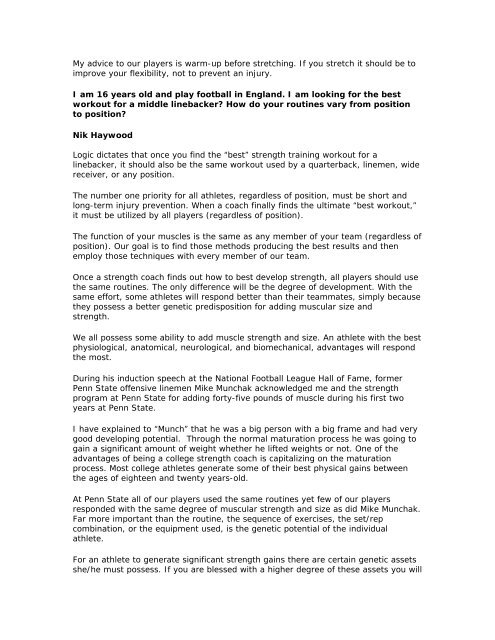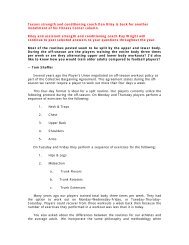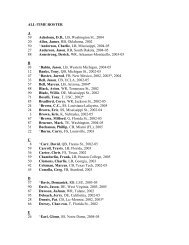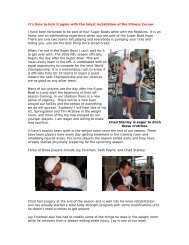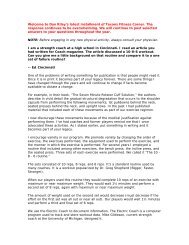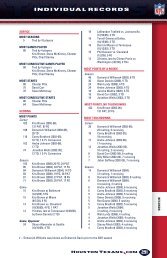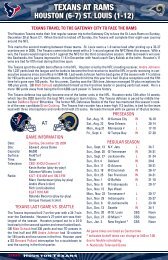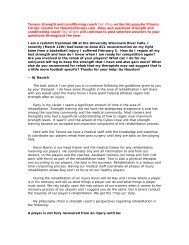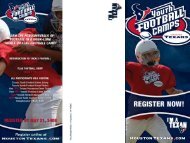Texans strength and conditioning coach Dan Riley writes his ...
Texans strength and conditioning coach Dan Riley writes his ...
Texans strength and conditioning coach Dan Riley writes his ...
Create successful ePaper yourself
Turn your PDF publications into a flip-book with our unique Google optimized e-Paper software.
My advice to our players is warm-up before stretching. If you stretch it should be toimprove your flexibility, not to prevent an injury.I am 16 years old <strong>and</strong> play football in Engl<strong>and</strong>. I am looking for the bestworkout for a middle linebacker? How do your routines vary from positionto position?Nik HaywoodLogic dictates that once you find the “best” <strong>strength</strong> training workout for alinebacker, it should also be the same workout used by a quarterback, linemen, widereceiver, or any position.The number one priority for all athletes, regardless of position, must be short <strong>and</strong>long-term injury prevention. When a <strong>coach</strong> finally finds the ultimate “best workout,”it must be utilized by all players (regardless of position).The function of your muscles is the same as any member of your team (regardless ofposition). Our goal is to find those methods producing the best results <strong>and</strong> thenemploy those techniques with every member of our team.Once a <strong>strength</strong> <strong>coach</strong> finds out how to best develop <strong>strength</strong>, all players should usethe same routines. The only difference will be the degree of development. With thesame effort, some athletes will respond better than their teammates, simply becausethey possess a better genetic predisposition for adding muscular size <strong>and</strong><strong>strength</strong>.We all possess some ability to add muscle <strong>strength</strong> <strong>and</strong> size. An athlete with the bestphysiological, anatomical, neurological, <strong>and</strong> biomechanical, advantages will respondthe most.During <strong>his</strong> induction speech at the National Football League Hall of Fame, formerPenn State offensive linemen Mike Munchak acknowledged me <strong>and</strong> the <strong>strength</strong>program at Penn State for adding forty-five pounds of muscle during <strong>his</strong> first twoyears at Penn State.I have explained to “Munch” that he was a big person with a big frame <strong>and</strong> had verygood developing potential. Through the normal maturation process he was going togain a significant amount of weight whether he lifted weights or not. One of theadvantages of being a college <strong>strength</strong> <strong>coach</strong> is capitalizing on the maturationprocess. Most college athletes generate some of their best physical gains betweenthe ages of eighteen <strong>and</strong> twenty years-old.At Penn State all of our players used the same routines yet few of our playersresponded with the same degree of muscular <strong>strength</strong> <strong>and</strong> size as did Mike Munchak.Far more important than the routine, the sequence of exercises, the set/repcombination, or the equipment used, is the genetic potential of the individualathlete.For an athlete to generate significant <strong>strength</strong> gains there are certain genetic assetsshe/he must possess. If you are blessed with a higher degree of these assets you will


